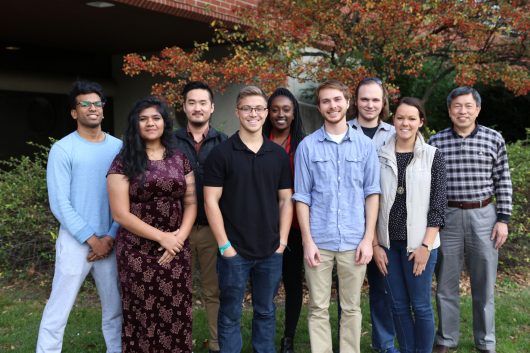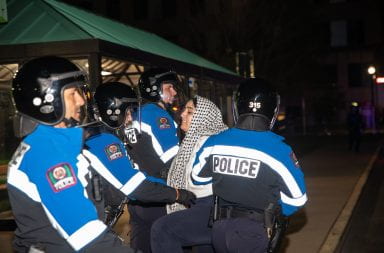
A team of Ohio State students is working with NASA to improve a passive water-delivery system for on-board plants and a method of recycling natural waste to create nutrient-rich soil at the International Space Station. Credit: Courtesy of Ohio State
A team of fourth-year Ohio State students studying food, agriculture and biological engineering is working with NASA to explore the limits of sustainably growing plants in deep space.
The team was one of eight schools to receive a $20,000 grant, marking the third year OSU has been chosen to work with NASA on its eXploration Systems and Habitation Academic Innovation Challenge. The challenge, also called X-Hab, seeks design solutions for deep-space exploration from students across the country. The innovations made by the OSU team have the potential to influence deep-space travel and potentially be the building blocks for future manned deep-space missions.
The project consists of two parts: improving a passive water-delivery system for on-board plants and a method of recycling natural waste to create nutrient-rich soil.
“What NASA’s looking for is a sustainable plant-growing system to use in zero gravity and microgravity,” said Brennan Cordova, one of the students working on the project. “Some things like this exist, but most of them don’t work very well. We’re hoping to change that.”
An improved passive water-delivery system would allow onboard plants to receive water automatically. The team built prototypes and conducted several 30-day plant-growth experiments that have influenced the design of plant pillows — the bags of soil designed to grow plants — used on future crops aboard International Space Station.
The team also designed a bioreactor — a container that efficiently decomposes materials — to recycle natural waste such as inedible plant parts, hair and urine to produce soil. Decomposing material that would otherwise be thrown away can produce nutrient-rich soil to cultivate other crops.
One of the biggest challenges the team faces is an inability to test prototypes in zero gravity and microgravity.
“We can’t test things in states of gravity similar to those experienced in space,” said Ryan Jeon, another student working on the project. “We want to apply for a drop test grant and a parabolic flight grant so we can test that in similar states.”
Both methods would allow the prototype to be tested in conditions similar to those in space and allow the engineers to make appropriate changes to the model.
Another hurdle is creating something that’s not based on prior research. Because the team is unearthing new scientific ground, Jeon said developing design alternatives or foreseeing future problems is difficult.
While the project has presented the team with obstacles, Cordova said they have also found it inspiring.
“Everything that NASA and SpaceX does advances so many other facets of science and technology — medicine, food, technology, agriculture — everything is affected by the advancements they make,” Cordova said.


